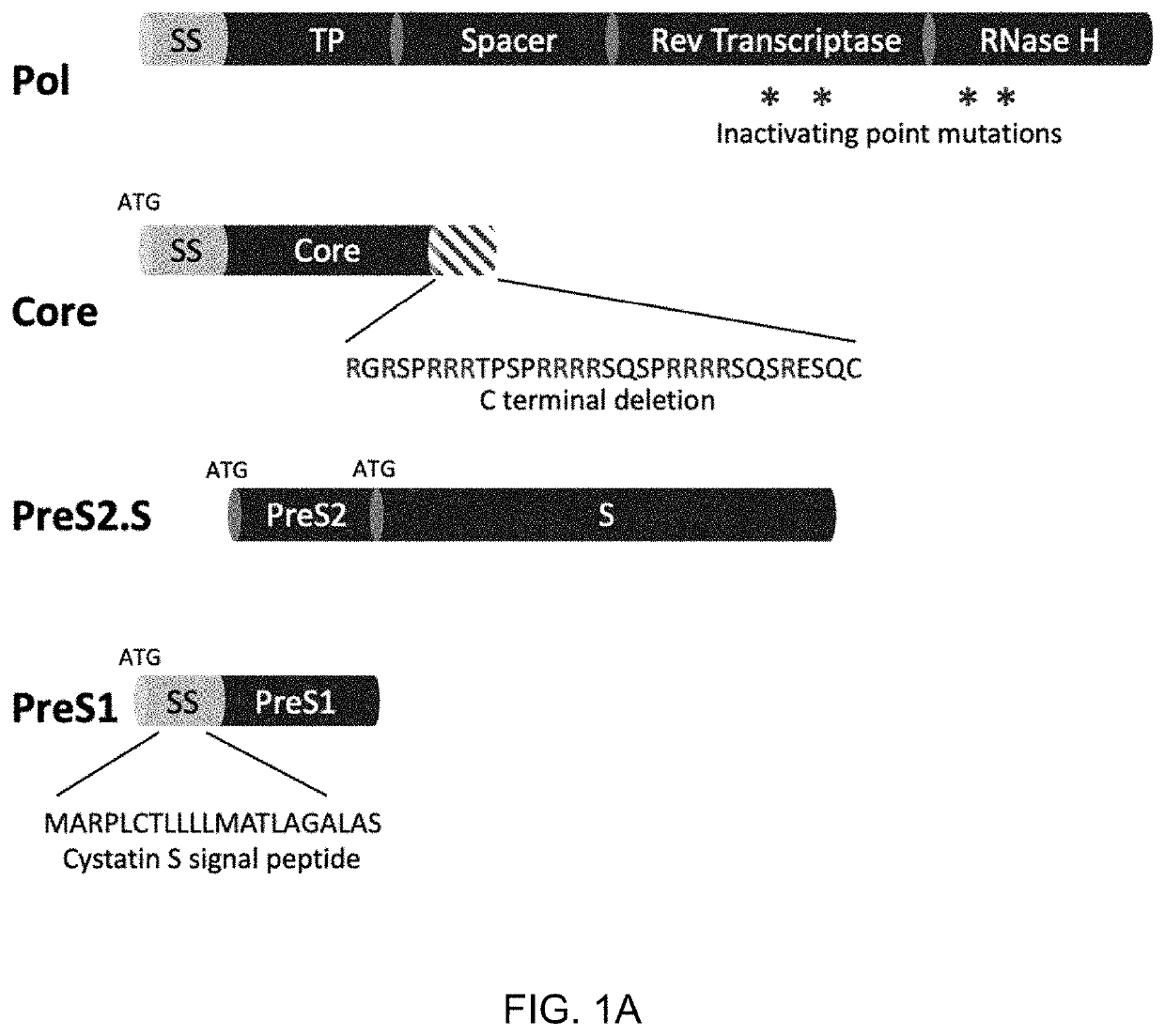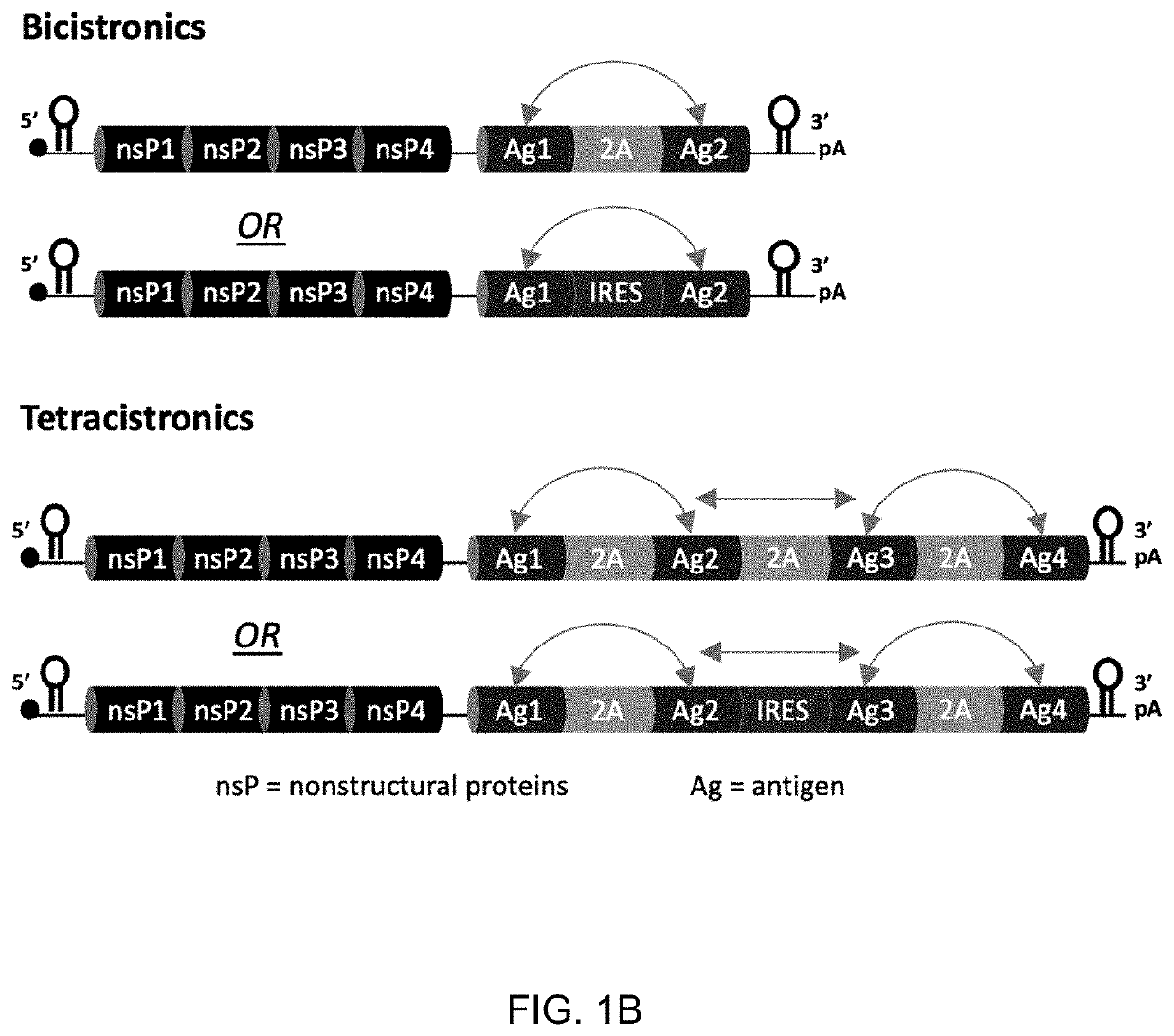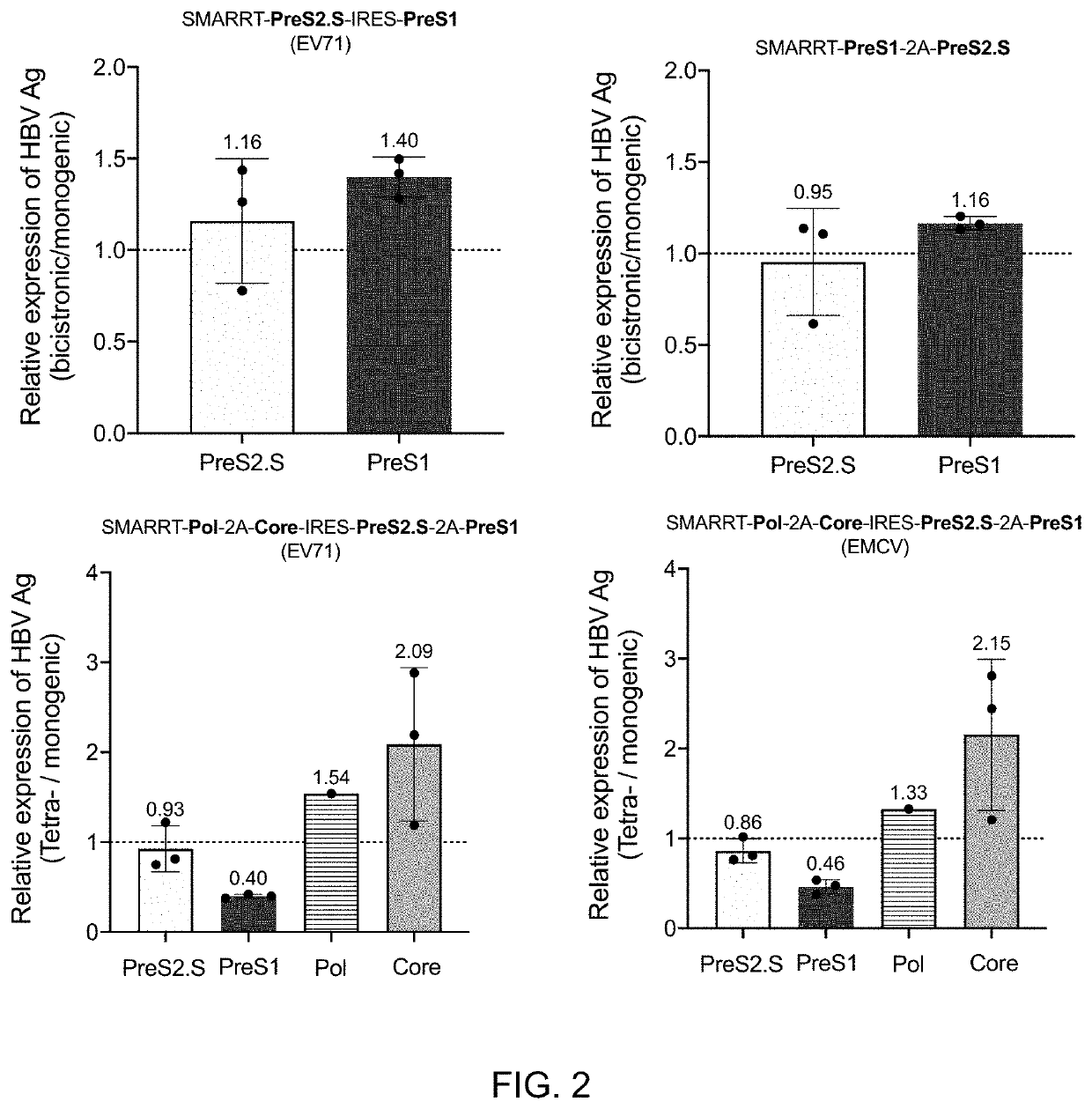RNA replicon vaccines against hbv
a technology of replicon vaccine and hbv, which is applied in the field of molecular biology and genetic engineering, can solve the problems of limited effect of cccdna, no ultimate cure, and inability to cure established hbv infection, and achieve the effect of higher cure ra
- Summary
- Abstract
- Description
- Claims
- Application Information
AI Technical Summary
Benefits of technology
Problems solved by technology
Method used
Image
Examples
example 1
election, Design and In Vitro Evaluation of Replicon Vaccine Candidates
[0769]The highly immunogenic HBV proteins Core, Pol, PreS2.S and PreS1 domain from L surface antigen were each selected for inclusion in a replicon HBV therapeutic vaccine. To centralize immunogenicity, a consensus sequence was generated based on the alignments of unique sequences for each antigen from genotypes A, B, C and D. By including these four genotypes, which make up >78% of the world's chronic hepatitis B (CHB) infections, the size of the treatable target population is maximized. Known human T cell epitopes for the top 3 most common MHC class I HLA alleles in China, the United States and Europe (including HLA-A*11:01, HLA-A*24:02, HLA-A*02:01, HLA-A*A0201, HLA-A*A2402, HLA-A* A0101, and HLA-B*40:01) were mapped to each consensus sequence. If a known epitope was found to be altered, the consensus sequence was adjusted to restore the epitope. For example, Arg149, 150 and 151 of the C terminus was included ...
example 2
plicon RNA Platform Induces Cellular Responses in Mice to HBV Targets
[0772]The purpose of these studies was to determine if Synthetic Modified Alpha RNA replicon technology (SMARRT) encoding HBV antigens could prime immune responses in C57BL / 6 mice. SMARRT monogenic HBV constructs were dosed at 15 μg and the admixed group received 4 SMARRT monogenic replicons at 15 μg of each replicon (total of 60 μg RNA per mouse). At Week 0, mice were immunized by IM injection with the indicated SMARRT construct(s), and a control group was injected with saline. At Week 2, all animals were sacrificed and splenocytes were stimulated with 15-mer overlapping peptide pools covering the antigen sequence in the insert (for SMARRT.Pol the overlapping library was split into 2 pools). The induction of IFN-γ-producing cells was measured by IFN-γ ELISpot. CD8 and CD4 polyfunctional T cell responses were determined by measuring the production of IFN-γ, TNFα and IL-2 by flow cytometry. Table 2 below shows the v...
example 3
ction of SMARRT HBV Therapeutic Vaccine Candidates in Mice
[0774]Following in vitro screening, 8 constructs were selected for in vivo immunogenicity analysis in mice, this included 4 tetracistronic constructs and 4 bigenic constructs which were admixed in 4 combinations to deliver all 4 HBV antigens. C57BL / 6 mice were immunized on Week 0, then spleens harvested on Week 2 for immunogenicity analysis according to the experimental outline in Table 3 below. Ex vivo studies included IFNγ ELISpot and intracellular cytokine staining
TABLE 3GroupAnimal #Description of groups (2-15 all SMARRT)15Saline25SMARRT.Core35SMARRT.Pol45SMARRT.PreS2.S55SMARRT.PreS165SMARRT.Admixed monogenics75PreS2.S-IRES-PreS1 (EV71 IRES) + Pol-IRES-Core (EMCV IRES) Admixed85PreS2.S-IRES-PreS1 (EV71 IRES) + Core-2A-Pol Admixed95PreS1-2A-PreS.S + Pol-IRES-Core (EMCV IRES) Admixed105PreS1-2A-PreS.S + Core-2A-Pol Admixed115PreS1-2A-PreS.S-2A-Core-Pol125PreS1-2A-PreS.S-2A-Pol-2A-Core135Pol-2A-Core-IRES-PreS2.S-2A-PreS1 (EM...
PUM
| Property | Measurement | Unit |
|---|---|---|
| nucleic acid | aaaaa | aaaaa |
| pharmaceutical composition | aaaaa | aaaaa |
Abstract
Description
Claims
Application Information
 Login to View More
Login to View More - R&D
- Intellectual Property
- Life Sciences
- Materials
- Tech Scout
- Unparalleled Data Quality
- Higher Quality Content
- 60% Fewer Hallucinations
Browse by: Latest US Patents, China's latest patents, Technical Efficacy Thesaurus, Application Domain, Technology Topic, Popular Technical Reports.
© 2025 PatSnap. All rights reserved.Legal|Privacy policy|Modern Slavery Act Transparency Statement|Sitemap|About US| Contact US: help@patsnap.com



